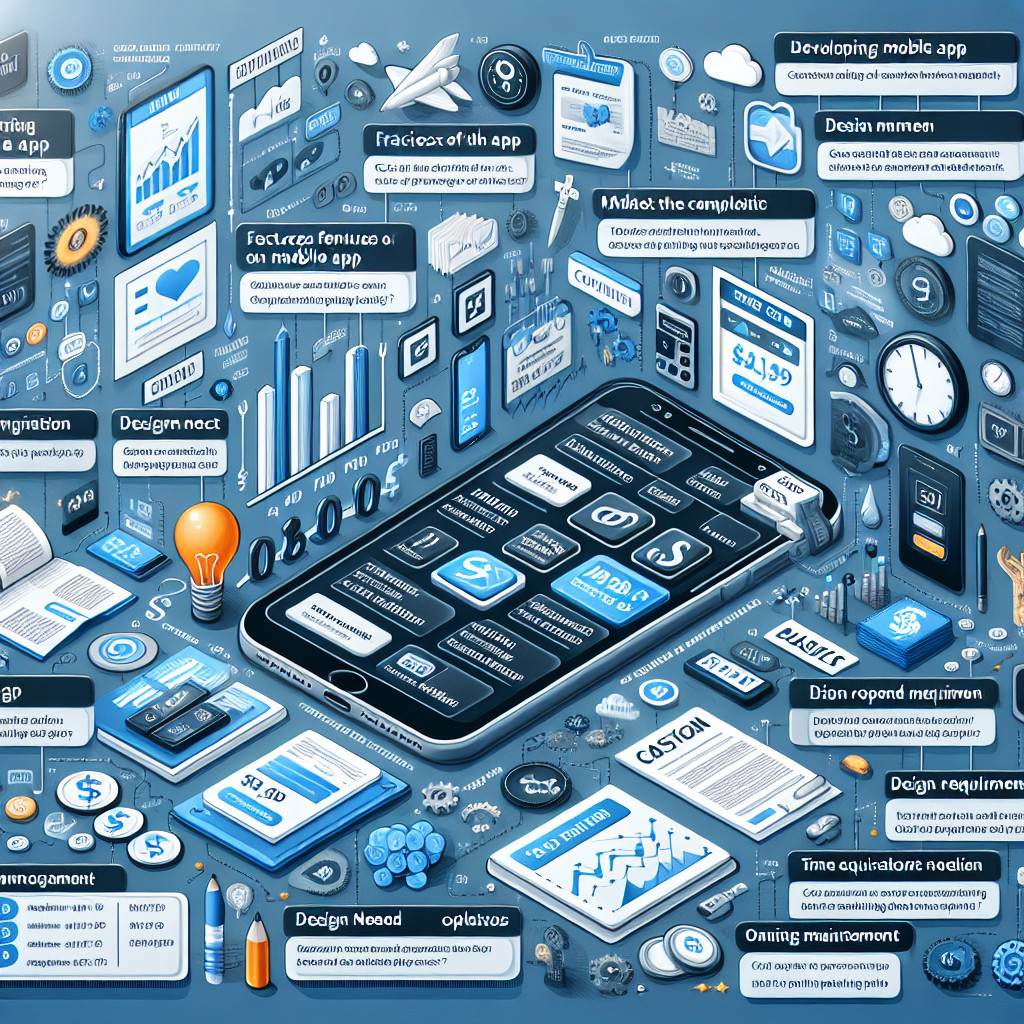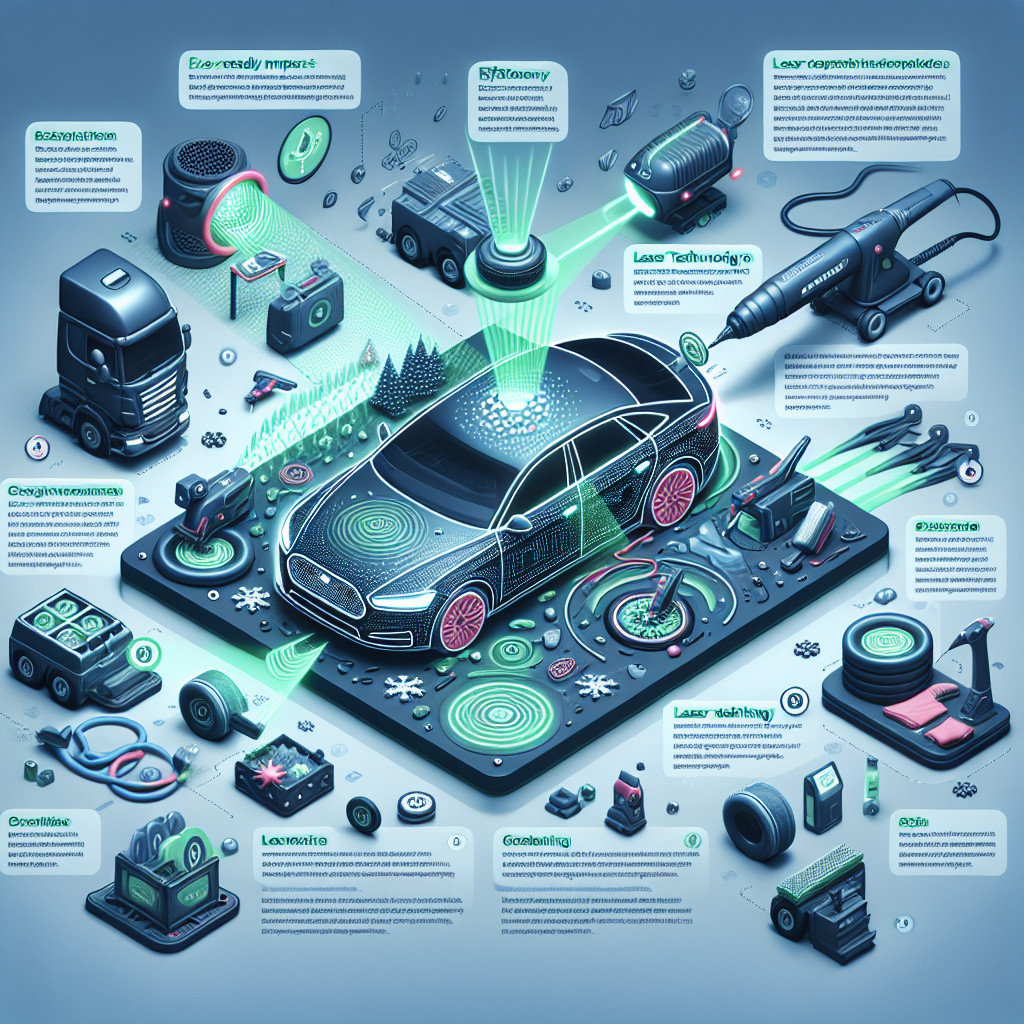The Role of Data Analytics in Business Decision Making
In today’s fast-paced and highly competitive business landscape, making informed decisions is crucial for the success and growth of any organization. With the advent of technology and the abundance of data available, businesses now have the opportunity to leverage data analytics to gain valuable insights and make data-driven decisions. Data analytics has emerged as a powerful tool that can transform raw data into actionable intelligence, enabling businesses to stay ahead of the curve and make strategic decisions that drive growth and profitability.
Data analytics involves the process of collecting, organizing, analyzing, and interpreting large volumes of data to uncover patterns, trends, and correlations. By harnessing the power of data analytics, businesses can gain a deeper understanding of their customers, market trends, and internal operations. This knowledge can then be used to identify opportunities, mitigate risks, optimize processes, and improve overall business performance.
One of the key benefits of data analytics in business decision making is its ability to provide insights into customer behavior and preferences. By analyzing customer data, businesses can identify patterns and trends that can help them tailor their products and services to meet the specific needs and preferences of their target audience. This can lead to increased customer satisfaction, loyalty, and ultimately, higher sales and revenue.
Data analytics also plays a crucial role in market research and competitive analysis. By analyzing market data, businesses can gain insights into market trends, competitor strategies, and customer preferences. This information can then be used to develop effective marketing campaigns, identify new market opportunities, and stay ahead of the competition.
Furthermore, data analytics can help businesses optimize their internal operations and improve efficiency. By analyzing operational data, businesses can identify bottlenecks, inefficiencies, and areas for improvement. This can lead to cost savings, streamlined processes, and increased productivity.
In addition to these benefits, data analytics can also help businesses mitigate risks and make more accurate predictions. By analyzing historical data and using predictive modeling techniques, businesses can identify potential risks and take proactive measures to mitigate them. This can help businesses avoid costly mistakes, make more informed decisions, and improve overall business performance.
In conclusion, data analytics plays a crucial role in business decision making. By leveraging the power of data analytics, businesses can gain valuable insights, make informed decisions, and drive growth and profitability. Whether it’s understanding customer behavior, identifying market trends, optimizing operations, or mitigating risks, data analytics provides businesses with the tools they need to stay competitive in today’s data-driven world.
Keywords: data analytics, business decision making, insights, data-driven decisions, competitive analysis, customer behavior, market trends, internal operations, market research, predictive modeling, risk mitigation, growth, profitability.
Long-tail phrases: leveraging data analytics for business decision making, transforming raw data into actionable intelligence, harnessing the power of data analytics, staying ahead of the curve, making strategic decisions, driving growth and profitability, customer data analysis, tailoring products and services to customer needs, market research and competitive analysis, optimizing internal operations, improving efficiency, mitigating risks, making accurate predictions, avoiding costly mistakes, staying competitive in a data-driven world.
Exploring the Different Types of Data Analytics
1. Descriptive Analytics:
Descriptive analytics focuses on summarizing historical data to gain insights into past events and trends. It involves analyzing data to answer questions like “What happened?” and “Why did it happen?” Descriptive analytics techniques include data visualization, data mining, and statistical analysis. Organizations use descriptive analytics to understand customer behavior, identify patterns, and make data-driven decisions based on historical data.
2. Diagnostic Analytics:
Diagnostic analytics goes a step further than descriptive analytics by analyzing data to understand the reasons behind past events. It aims to answer questions like “Why did it happen?” and “What were the contributing factors?” Diagnostic analytics techniques include root cause analysis, correlation analysis, and regression analysis. Organizations use diagnostic analytics to identify the factors that drive certain outcomes and gain insights into the cause-and-effect relationships within their data.
3. Predictive Analytics:
Predictive analytics leverages historical data and statistical modeling techniques to make predictions about future events or outcomes. It aims to answer questions like “What is likely to happen?” and “What are the potential outcomes?” Predictive analytics techniques include machine learning algorithms, time series analysis, and forecasting models. Organizations use predictive analytics to forecast demand, predict customer behavior, optimize operations, and make proactive decisions.
4. Prescriptive Analytics:
Prescriptive analytics takes predictive analytics a step further by recommending actions to optimize outcomes. It aims to answer questions like “What should we do?” and “What is the best course of action?” Prescriptive analytics techniques include optimization models, simulation, and decision analysis. Organizations use prescriptive analytics to optimize resource allocation, improve efficiency, and make data-driven decisions based on recommended actions.
5. Diagnostic Analytics:
Diagnostic analytics goes a step further than descriptive analytics by analyzing data to understand the reasons behind past events. It aims to answer questions like “Why did it happen?” and “What were the contributing factors?” Diagnostic analytics techniques include root cause analysis, correlation analysis, and regression analysis. Organizations use diagnostic analytics to identify the factors that drive certain outcomes and gain insights into the cause-and-effect relationships within their data.
6. Text Analytics:
Text analytics focuses on extracting insights from unstructured textual data, such as customer reviews, social media posts, and emails. It involves techniques like natural language processing, sentiment analysis, and text mining. Organizations use text analytics to understand customer sentiment, extract key information from text, and gain insights from unstructured data sources.
7. Social Media Analytics:
Social media analytics involves analyzing data from social media platforms to understand customer behavior, sentiment, and trends. It includes techniques like social network analysis, sentiment analysis, and trend analysis. Organizations use social media analytics to monitor brand reputation, identify influencers, and gain insights into customer preferences and opinions.
8. Web Analytics:
Web analytics focuses on analyzing website data to understand user behavior, optimize website performance, and improve user experience. It includes techniques like clickstream analysis, conversion rate optimization, and A/B testing. Organizations use web analytics to track website traffic, measure campaign effectiveness, and make data-driven decisions to enhance online presence.
9. Big Data Analytics:
Big data analytics deals with analyzing large and complex datasets that cannot be handled by traditional data processing techniques. It involves techniques like distributed computing, parallel processing, and machine learning algorithms. Organizations use big data analytics to extract insights from massive datasets, identify patterns, and make data-driven decisions at scale.
10. Business Intelligence Analytics:
Business intelligence analytics focuses on analyzing structured data from various sources to provide actionable insights for business decision-making. It involves techniques like data warehousing, data mining, and reporting. Organizations use business intelligence analytics to monitor key performance indicators, track business metrics, and gain insights into business operations.
In conclusion, data analytics encompasses a wide range of techniques that cater to different business needs and objectives. From descriptive analytics to prescriptive analytics, each type of data analytics offers unique insights and benefits. By leveraging the power of data analytics, organizations can make informed decisions, optimize operations, and gain a competitive edge in today’s data-driven world.
Keywords: data analytics, descriptive analytics, diagnostic analytics, predictive analytics, prescriptive analytics, text analytics, social media analytics, web analytics, big data analytics, business intelligence analytics.
Long-tail phrases: exploring different types of data analytics, applications of data analytics, types of data analytics techniques, benefits of data analytics, data-driven decision-making, extracting insights from data, leveraging historical data, optimizing outcomes, unstructured data analysis, customer sentiment analysis, website performance optimization, big data processing, business intelligence for decision-making.
The Impact of Data Analytics on Marketing Strategies
One of the key advantages of data analytics in marketing is the ability to gain valuable insights into consumer behavior. By analyzing data from various sources such as social media, website traffic, and customer feedback, businesses can understand their customers’ preferences, interests, and purchasing patterns. This information allows marketers to create personalized and targeted campaigns that resonate with their audience, leading to higher conversion rates and customer satisfaction.
Data analytics also enables businesses to track and measure the success of their marketing campaigns. By monitoring key performance indicators (KPIs) such as click-through rates, conversion rates, and customer engagement, marketers can identify which strategies are working and which need improvement. This data-driven approach allows businesses to optimize their marketing efforts, allocate resources more effectively, and achieve better ROI.
Furthermore, data analytics helps businesses identify new market opportunities and trends. By analyzing market data and consumer insights, businesses can uncover untapped segments, emerging markets, and changing consumer preferences. This information allows marketers to adapt their strategies accordingly, stay ahead of the competition, and capitalize on new opportunities.
Another significant impact of data analytics on marketing strategies is the ability to personalize customer experiences. By leveraging data, businesses can create personalized recommendations, offers, and content that cater to individual customer needs and preferences. This level of personalization not only enhances the customer experience but also increases customer loyalty and retention.
Moreover, data analytics plays a crucial role in optimizing pricing strategies. By analyzing market data, competitor pricing, and customer behavior, businesses can determine the optimal price points for their products or services. This data-driven approach ensures that businesses remain competitive while maximizing profitability.
In addition to these benefits, data analytics also helps businesses improve their overall decision-making process. By providing accurate and timely insights, businesses can make informed decisions based on data rather than relying on intuition or guesswork. This data-driven decision-making approach minimizes risks, reduces costs, and increases the chances of success.
In conclusion, data analytics has revolutionized marketing strategies by providing businesses with valuable insights into consumer behavior, enabling personalized marketing campaigns, optimizing pricing strategies, and improving overall decision-making. The ability to analyze and interpret data has become a competitive advantage for businesses in today’s digital landscape. By harnessing the power of data analytics, businesses can stay ahead of the competition, drive growth, and achieve their marketing objectives.
Keywords: data analytics, marketing strategies, consumer behavior, personalized campaigns, key performance indicators, market opportunities, customer experiences, pricing strategies, decision-making process.
Long-tail phrases: impact of data analytics on marketing strategies, benefits of data analytics in marketing, personalized marketing campaigns, optimizing pricing strategies with data analytics, data-driven decision-making in marketing.
The Role of Data Analytics in Cybersecurity
Data analytics, also known as data analysis, is the process of examining large sets of data to uncover patterns, correlations, and insights. It involves the use of various statistical and mathematical techniques to extract meaningful information from raw data. While data analytics has been widely used in fields such as marketing and finance, its application in cybersecurity is relatively new but rapidly growing.
The traditional approach to cybersecurity primarily focused on building strong defense mechanisms, such as firewalls and antivirus software, to prevent unauthorized access and attacks. However, with the evolving nature of cyber threats, this approach alone is no longer sufficient. Attackers are becoming more sophisticated, using advanced techniques to bypass traditional security measures. This is where data analytics comes into play.
By analyzing vast amounts of data generated by network logs, system logs, and other sources, data analytics can help identify patterns and anomalies that may indicate a potential security breach. It can detect unusual network traffic, unauthorized access attempts, and suspicious user behavior, enabling organizations to take proactive measures to mitigate the risks. Moreover, data analytics can also help in identifying the source and nature of an attack, aiding in the investigation and forensic analysis.
One of the key advantages of data analytics in cybersecurity is its ability to provide real-time insights. Traditional security measures often rely on predefined rules and signatures to detect threats, which may not be effective against new and unknown attacks. Data analytics, on the other hand, can continuously monitor and analyze data in real-time, allowing for early detection and response to emerging threats. This proactive approach can significantly reduce the impact of an attack and minimize the damage caused.
Another area where data analytics plays a crucial role in cybersecurity is in threat intelligence. By analyzing data from various sources, such as threat feeds, social media, and dark web forums, data analytics can help identify emerging threats and trends. It can provide valuable information about the tactics, techniques, and procedures used by attackers, enabling organizations to better prepare and defend against future attacks. Additionally, data analytics can also help in predicting and forecasting potential threats, allowing organizations to allocate their resources effectively.
In recent years, machine learning and artificial intelligence (AI) have emerged as powerful tools in data analytics for cybersecurity. These technologies can analyze vast amounts of data at scale, identify complex patterns, and make intelligent decisions in real-time. Machine learning algorithms can learn from historical data and adapt to new threats, improving the accuracy and effectiveness of cybersecurity systems. AI-powered systems can also automate various security tasks, such as threat detection and incident response, reducing the burden on human analysts and enabling faster response times.
In conclusion, data analytics plays a crucial role in cybersecurity by providing organizations with the ability to detect, prevent, and respond to cyber threats effectively. It enables proactive threat detection, real-time monitoring, and intelligent decision-making, helping organizations stay one step ahead of attackers. The integration of machine learning and AI further enhances the capabilities of data analytics, making it an indispensable tool in the fight against cybercrime.
Keywords: data analytics, cybersecurity, data analysis, patterns, correlations, insights, cyber threats, attacks, sensitive data, systems, defense mechanisms, firewalls, antivirus software, unauthorized access, suspicious user behavior, real-time insights, early detection, response, threat intelligence, machine learning, artificial intelligence, threat detection, incident response, proactive threat detection, monitoring, decision-making, cybercrime.
Long-tail phrases: the evolving nature of cyber threats, advanced techniques to bypass traditional security measures, identifying the source and nature of an attack, investigation and forensic analysis, real-time monitoring and analysis, emerging threats and trends, predicting and forecasting potential threats, machine learning algorithms, adapting to new threats, automating security tasks, reducing the burden on human analysts, faster response times, fight against cybercrime.
Data Analytics in Transportation: Improving Logistics
The Role of Data Analytics in Transportation:
Data analytics involves the collection, analysis, and interpretation of vast amounts of data to gain valuable insights and drive informed decision-making. In the transportation sector, data analytics can be applied to various aspects, including route optimization, demand forecasting, fleet management, supply chain visibility, and risk management. By analyzing historical and real-time data, transportation companies can identify patterns, trends, and anomalies, enabling them to make proactive decisions and respond quickly to changing market conditions.
Route Optimization:
One of the key areas where data analytics can significantly improve logistics is route optimization. By analyzing historical traffic data, weather conditions, and other relevant factors, transportation companies can identify the most efficient routes for their vehicles. This not only reduces fuel consumption and emissions but also minimizes delivery times and improves overall customer satisfaction. Additionally, data analytics can help companies identify potential bottlenecks and optimize their routes accordingly, ensuring smooth operations and timely deliveries.
Demand Forecasting:
Accurate demand forecasting is crucial for transportation companies to optimize their resources and meet customer expectations. By analyzing historical sales data, market trends, and other relevant factors, companies can predict future demand patterns and adjust their operations accordingly. This enables them to optimize inventory levels, plan efficient routes, and allocate resources effectively. Data analytics also helps companies identify seasonal demand fluctuations, enabling them to make informed decisions about capacity planning and resource allocation.
Fleet Management:
Effective fleet management is essential for transportation companies to ensure the availability and optimal utilization of their vehicles. Data analytics can help companies monitor vehicle performance, track maintenance schedules, and identify potential issues before they escalate. By analyzing data from sensors and telematics devices installed in vehicles, companies can gain real-time insights into fuel consumption, driver behavior, and vehicle health. This allows them to optimize maintenance schedules, reduce downtime, and improve overall fleet efficiency.
Supply Chain Visibility:
In today’s globalized economy, supply chain visibility is crucial for transportation companies to track the movement of goods and ensure timely deliveries. Data analytics can provide real-time visibility into the entire supply chain, enabling companies to track shipments, monitor inventory levels, and identify potential bottlenecks. By analyzing data from various sources, such as GPS trackers, RFID tags, and warehouse management systems, companies can gain valuable insights into the status and location of their shipments. This allows them to proactively address any issues and provide accurate delivery estimates to their customers.
Risk Management:
Transportation companies face various risks, including accidents, theft, natural disasters, and regulatory compliance issues. Data analytics can help companies identify potential risks, assess their impact, and develop effective risk mitigation strategies. By analyzing historical data and external factors, companies can identify patterns and trends that indicate potential risks. This allows them to take proactive measures, such as implementing safety protocols, enhancing security measures, and ensuring compliance with regulations.
Conclusion:
Data analytics has the potential to revolutionize the transportation industry by improving logistics processes and enhancing overall efficiency. By leveraging the power of data, transportation companies can optimize route planning, accurately forecast demand, effectively manage their fleets, ensure supply chain visibility, and mitigate risks. The insights gained from data analytics enable companies to make informed decisions, reduce costs, improve customer satisfaction, and gain a competitive edge in the market.
Keywords: data analytics, transportation, logistics, route optimization, demand forecasting, fleet management, supply chain visibility, risk management, efficiency, customer satisfaction.
Long-tail phrases:
– Leveraging data analytics to optimize logistics in transportation.
– The significance of data analytics in improving transportation logistics.
– How data analytics can revolutionize the transportation industry.
– The role of data analytics in route optimization for transportation companies.
– Enhancing demand forecasting through data analytics in transportation.
– Fleet management optimization using data analytics in transportation.
– The importance of supply chain visibility in transportation logistics.
– Mitigating risks in transportation through data analytics.
– The impact of data analytics on efficiency and customer satisfaction in transportation.
The Impact of Data Analytics on E-commerce
Data analytics in e-commerce involves the collection, analysis, and interpretation of data to identify patterns, trends, and correlations. By leveraging advanced analytics tools and techniques, businesses can extract meaningful insights from large datasets, enabling them to make data-driven decisions. This allows e-commerce companies to optimize their marketing strategies, personalize customer experiences, and enhance operational efficiency.
One of the key benefits of data analytics in e-commerce is the ability to understand customer behavior. By analyzing customer data, businesses can gain insights into their preferences, purchase history, and browsing patterns. This information can be used to create personalized marketing campaigns, recommend relevant products, and improve customer retention. For example, by analyzing customer data, an e-commerce company can identify customers who are likely to churn and take proactive measures to retain them.
Data analytics also plays a crucial role in optimizing pricing strategies. By analyzing market trends, competitor pricing, and customer behavior, businesses can determine the optimal price points for their products. This allows them to maximize revenue and profitability while remaining competitive in the market. Additionally, data analytics can help identify pricing anomalies and detect fraudulent activities, protecting businesses from potential losses.
Furthermore, data analytics enables e-commerce companies to improve their supply chain management. By analyzing data related to inventory levels, order fulfillment, and delivery times, businesses can optimize their supply chain processes. This includes forecasting demand, managing inventory levels, and streamlining logistics operations. By doing so, businesses can reduce costs, improve customer satisfaction, and enhance overall operational efficiency.
In addition to these benefits, data analytics also helps e-commerce companies in fraud detection and prevention. By analyzing transactional data, businesses can identify patterns and anomalies that indicate fraudulent activities. This allows them to take immediate action to prevent financial losses and protect their customers’ sensitive information. Moreover, data analytics can help in identifying potential security vulnerabilities and implementing appropriate measures to safeguard against cyber threats.
In conclusion, data analytics has a significant impact on the e-commerce industry. By leveraging the power of data, businesses can gain valuable insights into customer behavior, optimize pricing strategies, improve supply chain management, and detect fraudulent activities. These insights enable businesses to make data-driven decisions, enhance customer experience, and drive business growth.
Keywords: data analytics, e-commerce, customer behavior, personalized marketing, pricing strategies, supply chain management, fraud detection, operational efficiency, customer experience, cyber threats.
Long-tail phrases:
– The role of data analytics in e-commerce
– Benefits of data analytics in e-commerce
– How data analytics improves customer experience in e-commerce
– The impact of data analytics on pricing strategies in e-commerce
– Data analytics and supply chain management in e-commerce
– Fraud detection and prevention in e-commerce through data analytics
– Enhancing operational efficiency in e-commerce with data analytics.
Data Analytics in Entertainment: Optimizing Content Recommendations
Data analytics refers to the process of collecting, analyzing, and interpreting large sets of data to uncover patterns, trends, and insights. In the entertainment industry, data analytics has become a powerful tool for understanding consumer behavior and preferences. By leveraging data analytics, streaming platforms and content providers can optimize their content recommendations, ensuring that users are presented with personalized suggestions that cater to their individual tastes.
One of the key benefits of data analytics in entertainment is the ability to gather and analyze user data. Streaming platforms collect vast amounts of data on user behavior, including viewing history, search queries, and ratings. By analyzing this data, platforms can gain valuable insights into user preferences, allowing them to make more accurate content recommendations. For example, if a user frequently watches action movies, the platform can suggest similar movies or TV shows within the same genre.
Furthermore, data analytics can also help identify trends and patterns in user behavior. By analyzing data from a large user base, content providers can identify popular genres, actors, or directors, and tailor their content recommendations accordingly. This not only enhances the user experience but also helps content providers make informed decisions about content acquisition and production.
Another aspect of data analytics in entertainment is sentiment analysis. Sentiment analysis involves analyzing user feedback, reviews, and social media posts to gauge audience reactions to specific content. By understanding audience sentiment, content providers can identify areas of improvement and make necessary adjustments to enhance the overall quality of their offerings. Sentiment analysis also helps in identifying potential issues or controversies surrounding certain content, allowing providers to address them proactively.
Moreover, data analytics can be used to optimize content discovery algorithms. Content recommendation algorithms rely on complex mathematical models to predict user preferences. By continuously analyzing user data and feedback, these algorithms can be fine-tuned to provide more accurate and relevant recommendations. This not only improves user satisfaction but also increases user engagement and retention.
In addition to personalized content recommendations, data analytics can also be used to optimize content curation. Content curation involves selecting and organizing content based on specific themes or categories. By analyzing user data, content providers can curate content that aligns with popular trends or interests. This ensures that users are presented with a diverse range of content that caters to their preferences, increasing the likelihood of user engagement and satisfaction.
In conclusion, data analytics has revolutionized the way content recommendations are made in the entertainment industry. By leveraging user data and sentiment analysis, content providers can optimize their content recommendations, ensuring that users are presented with personalized suggestions that align with their preferences. Additionally, data analytics helps in identifying trends, improving content discovery algorithms, and optimizing content curation. As the entertainment industry continues to evolve, data analytics will play an increasingly crucial role in enhancing the user experience and driving business growth.
Keywords: data analytics, entertainment industry, content recommendations, streaming platforms, user behavior, personalized suggestions, sentiment analysis, content discovery algorithms, content curation.
Long-tail phrases: optimizing content recommendations in entertainment, data analytics in the entertainment industry, personalized content suggestions, user behavior analysis, sentiment analysis in entertainment, content discovery algorithms optimization, content curation in the digital age.
Data Analytics in Transportation: Improving Logistics
1. Real-time Tracking and Monitoring:
One of the key benefits of data analytics in transportation is the ability to track and monitor shipments in real-time. By collecting and analyzing data from various sources such as GPS devices, sensors, and telematics systems, companies can gain valuable insights into the location, condition, and status of their shipments. This enables them to proactively address any issues or delays, improving overall logistics efficiency.
2. Predictive Analytics for Demand Forecasting:
Data analytics also plays a crucial role in demand forecasting, allowing companies to predict future demand patterns accurately. By analyzing historical data, market trends, and external factors such as weather conditions, companies can optimize their inventory levels, reduce stockouts, and minimize transportation costs. This helps in streamlining logistics operations and ensuring timely delivery of goods.
3. Route Optimization:
Another significant application of data analytics in transportation is route optimization. By analyzing historical traffic data, road conditions, and other relevant factors, companies can identify the most efficient routes for their shipments. This not only reduces transportation costs but also minimizes delivery time, improving customer satisfaction. Additionally, data analytics can help in identifying alternative routes in case of unexpected events or road closures, ensuring uninterrupted logistics operations.
4. Fleet Management and Maintenance:
Data analytics plays a crucial role in fleet management and maintenance. By collecting and analyzing data from vehicles, companies can monitor fuel consumption, driver behavior, and vehicle performance. This helps in identifying areas of improvement, optimizing fuel efficiency, and reducing maintenance costs. Moreover, predictive analytics can be used to anticipate potential breakdowns or maintenance requirements, enabling proactive maintenance and minimizing downtime.
5. Supply Chain Visibility:
Data analytics provides companies with enhanced visibility into their supply chain operations. By integrating data from various stakeholders such as suppliers, manufacturers, and distributors, companies can gain real-time insights into inventory levels, order status, and production schedules. This enables them to make informed decisions, optimize inventory management, and improve overall supply chain efficiency.
6. Risk Management:
Data analytics also plays a crucial role in risk management in the transportation industry. By analyzing historical data and external factors such as weather conditions and traffic patterns, companies can identify potential risks and develop contingency plans. This helps in mitigating risks, ensuring the safety of shipments, and minimizing disruptions in logistics operations.
Keywords: data analytics, transportation, logistics, real-time tracking, monitoring, predictive analytics, demand forecasting, route optimization, fleet management, maintenance, supply chain visibility, risk management.
Long-tail phrases:
1. Leveraging data analytics to optimize transportation logistics.
2. The role of real-time tracking and monitoring in improving logistics efficiency.
3. Predictive analytics for accurate demand forecasting in transportation.
4. Route optimization: reducing costs and improving delivery time.
5. Fleet management and maintenance: optimizing fuel efficiency and minimizing downtime.
6. Enhancing supply chain visibility through data analytics.
7. Risk management in transportation: mitigating risks and ensuring shipment safety.
Conclusion:
Data analytics has revolutionized the transportation industry by providing companies with valuable insights into their logistics operations. From real-time tracking and monitoring to predictive analytics for demand forecasting, data analytics has become an indispensable tool for improving logistics efficiency. By optimizing routes, managing fleets, and enhancing supply chain visibility, companies can reduce costs, improve delivery time, and ensure customer satisfaction. Moreover, data analytics helps in mitigating risks and ensuring the safety of shipments. As the transportation industry continues to evolve, data analytics will play an increasingly vital role in shaping the future of logistics.
Keywords: data analytics, transportation, logistics, real-time tracking, monitoring, predictive analytics, demand forecasting, route optimization, fleet management, maintenance, supply chain visibility, risk management.
Long-tail phrases:
1. Leveraging data analytics to optimize transportation logistics.
2. The role of real-time tracking and monitoring in improving logistics efficiency.
3. Predictive analytics for accurate demand forecasting in transportation.
4. Route optimization: reducing costs and improving delivery time.
5. Fleet management and maintenance: optimizing fuel efficiency and minimizing downtime.
6. Enhancing supply chain visibility through data analytics.
7. Risk management in transportation: mitigating risks and ensuring shipment safety.







